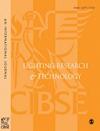室内照明标准及其在照明实践中的作用
IF 2.2
3区 工程技术
Q2 CONSTRUCTION & BUILDING TECHNOLOGY
引用次数: 2
摘要
室内照明标准最初是作为确保工作场所视觉任务有效执行的一种手段而引入的。他们的范围很快扩大到更广泛的应用范围,以及视觉不适。因此,它们成为消除不良照明的一种手段,并且在这方面取得了成功。然而,现在它们通常被视为对照明从业者开发替代设计的自由的限制。部分原因是针对没有关键视觉任务的应用发布了标准,部分原因是确保符合标准的传统设计程序假设了常规灯具阵列。提出了克服这一问题的三个步骤。首先是将照明建议分为标准和指南。标准应该在法律上强制执行,并致力于消除不良照明。促进良好照明应通过具体应用的指导文件来实现。二是将标准中使用的度量从任务照度改为环境照度,从照亮任务照度改为照亮空间。三是将设计方法从流明法改为照明设计目标程序。本文章由计算机程序翻译,如有差异,请以英文原文为准。
Indoor lighting standards and their role in lighting practice
Indoor lighting standards were first introduced as a means to ensure the efficient performance of visual tasks in workplaces. Their scope soon expanded to cover a wider range of applications as well as visual discomfort. They thus became a means to eliminate bad lighting, and in this they have been successful. However, now they are often seen as a restriction on the freedom of lighting practitioners to develop alternative designs. This is partly because standards have been issued for applications where there are no critical visual tasks, and partly because the conventional design procedure ensuring compliance with standards assumes a regular array of luminaires. Three steps are proposed for overcoming this problem. The first is to separate lighting recommendations into standards and guidance. Standards should be legally enforceable and devoted to eliminating bad lighting. Promotion of good lighting should be achieved by applications-specific guidance documents. The second is to change the metric used in standards from task illuminance to ambient illuminance, from lighting the task to lighting the space. The third is to change the design method used from the lumen method to the lighting design objectives procedure.
求助全文
通过发布文献求助,成功后即可免费获取论文全文。
去求助
来源期刊

Lighting Research & Technology
工程技术-光学
CiteScore
5.40
自引率
16.00%
发文量
69
审稿时长
>12 weeks
期刊介绍:
Lighting Research & Technology (LR&T) publishes original peer-reviewed research on all aspects of light and lighting and is published in association with The Society of Light and Lighting. LR&T covers the human response to light, the science of light generation, light control and measurement plus lighting design for both interior and exterior environments, as well as daylighting, energy efficiency and sustainability
 求助内容:
求助内容: 应助结果提醒方式:
应助结果提醒方式:


